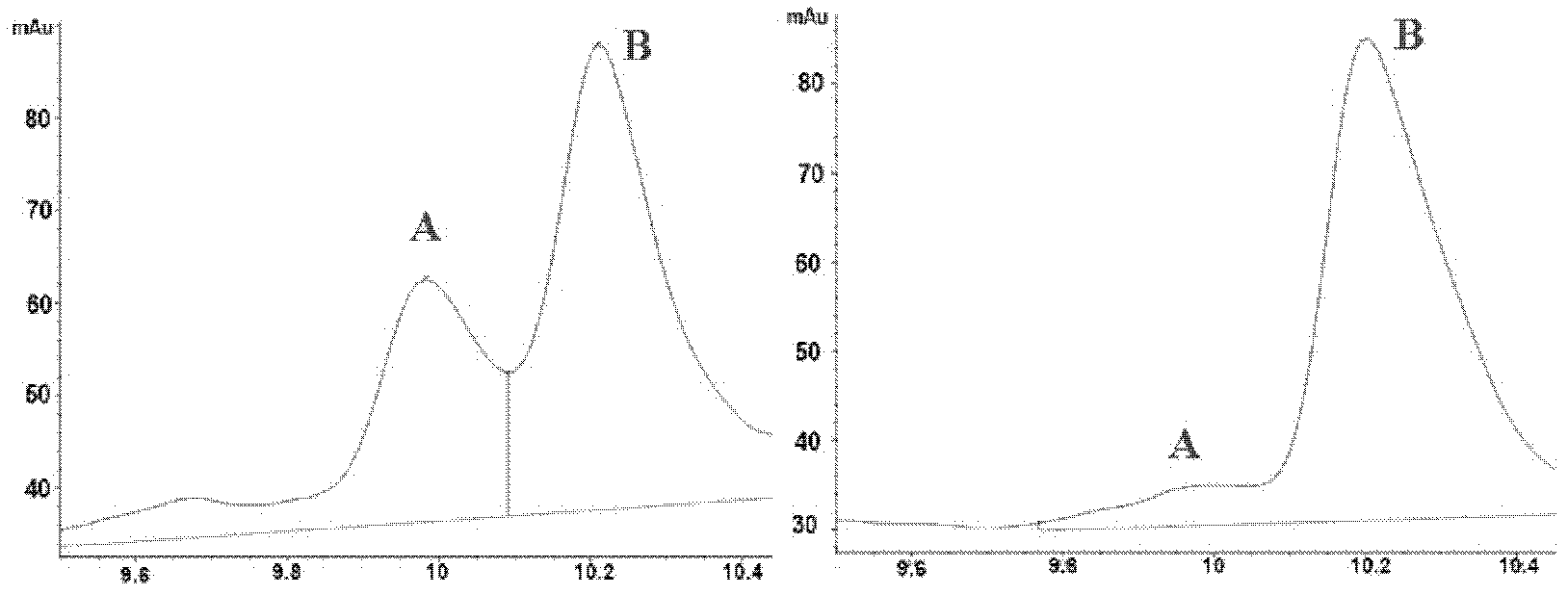Recombinant bacteria expressed by escherichia coli genome N-acetylase by control of heterogenous promoter, and use thereof
A technology of acetyltransferase and recombinant bacteria, which is applied in the fields of application, genetic engineering, plant gene improvement, etc., can solve the problems of restricting wide application, high product price, low yield, etc., achieve obvious application prospects, increase yield, The effect of easy separation
- Summary
- Abstract
- Description
- Claims
- Application Information
AI Technical Summary
Problems solved by technology
Method used
Image
Examples
Embodiment 1
[0060] Example 1. Recombinant bacteria co-expressed with acetyltransferase rimL and prothymosin α using T7 promoter
[0061] Using Red recombination technology, the T7 promoter (derived from the PET22b plasmid, which was purchased from Novagen) with the lactose operon was inserted into the open reading frame (ORF) of the N-acetyltransferase rimL gene of Escherichia coli BL21 (DE3). ), the T7 RNA polymerase gene controlled by the lactose promoter in the genome of the bacterium. When lactose or its analogs, such as IPTG, are added to the medium, the T7 RNA polymerase gene expression controlled by the lactose promoter, the synthetic T7 RNA polymerase binds to the T7 promoter artificially inserted into the upstream of the open reading frame (ORF) of the rimL gene At the same time, the lactose operon downstream of the T7 promoter is derepressed to control the high-efficiency transcription of the N-acetyltransferase rimL gene, thereby realizing the overexpression of the N-acetyltran...
Embodiment 2
[0098] Embodiment 2, BL21 (DE3) (T7rimL / proTα (Thr 13 )) Preparation of N-acetylated prothymosin alpha
[0099] 1. Crude protein extract
[0100] BL21(DE3)(T7rimL / proTα(Thr 13 )) and control bacteria BL21(DE3)(proTα(Thr 13 )) were respectively inoculated in 50ml LB liquid medium, cultured on a shaker at 37°C overnight, and then transferred to 500ml medium (yeast extract 10g / L, tryptone 10g / L, sodium dihydrogen phosphate 20mM, hydrogen phosphate Disodium 30mM) in a 3L shake flask, after culturing at 37°C for 2h, add 1.25ml of 0.2mol / L IPTG (0.5mM) for induction, continue to cultivate for 6h, centrifuge the fermentation broth, and collect the thalli.
[0101] Resuspend the collected bacteria with water (add 10ml of water per gram of bacteria), break the wall with ultrasonic waves, collect the supernatant by centrifugation, add glacial acetic acid to the supernatant to adjust the pH to 4.5, let stand for 30 minutes, and collect the supernatant by centrifugation. It is the cru...
Embodiment 3
[0112] Example 3. Recombinant bacteria co-expressed with acetyltransferase rimJ of T7 promoter and prothymosin α
[0113] This example is similar to the method in Example 1. Red recombination technology is also used to insert the T7 promoter (derived from the PET22b plasmid, which was purchased from Novagen) with the lactose operon into the N- The upstream of the open reading frame (ORF) of the acetyltransferase rimJ gene, the T7 RNA polymerase gene controlled by the lactose promoter in the genome of the bacteria. When lactose or its analogues, such as IPTG, are added to the medium, the T7 RNA polymerase gene expression controlled by the lactose promoter, the synthetic T7 RNA polymerase binds to the T7 promoter artificially inserted into the upstream of the open reading frame (ORF) of the rimJ gene At the same time, the lactose operon downstream of the T7 promoter is derepressed to control the high-efficiency transcription of the N-acetyltransferase rimJ gene, thereby realizin...
PUM
 Login to View More
Login to View More Abstract
Description
Claims
Application Information
 Login to View More
Login to View More - R&D
- Intellectual Property
- Life Sciences
- Materials
- Tech Scout
- Unparalleled Data Quality
- Higher Quality Content
- 60% Fewer Hallucinations
Browse by: Latest US Patents, China's latest patents, Technical Efficacy Thesaurus, Application Domain, Technology Topic, Popular Technical Reports.
© 2025 PatSnap. All rights reserved.Legal|Privacy policy|Modern Slavery Act Transparency Statement|Sitemap|About US| Contact US: help@patsnap.com



